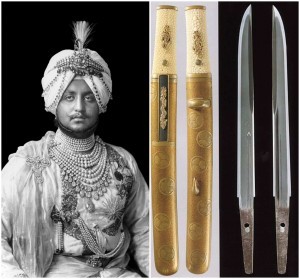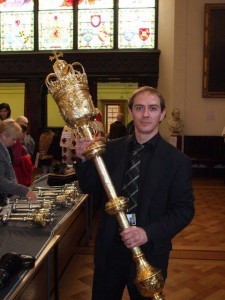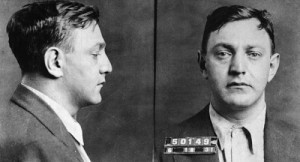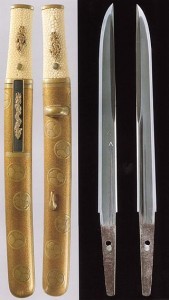Several of the world’s most invaluable artifacts have been lost in war, buried, forgotten, or simply misplaced without an account. Many have been missing for so long they have turned into little more than legends. Several have made it to the black market. Several have been stored away in private collections. It is thought that some have been destroyed completely.
Patiala Necklace
(Bhupinder Singh of Patiala, wearing the Patiala Necklace)
The Patiala Necklace was an item of extraordinary beauty, fashioned by the house of Cartier in the year 1928. This present to the Maharaja Sir Bhupinder Singh had five rows of platinum chains decorated with 2,930 diamonds. It was covered with Burmese rubies amongst other jewels. The centerpiece was the seventh largest diamond in the world, the renowned DeBeers Diamond, a 234.6 carat yellow rock approximately the size of a golf ball. The prized necklace disappeared in the year of 1948. The last person to lay their eyes on this extravagant piece was his son, Maharaja Yadavindra Singh.
The necklace itself was found by a Cartier representative in the city of London about 50 years later, but the most precious jewels were missing. Amongst them were the DeBeers Diamond and the Burmese rubies. Cartier repaired the necklace to the best of his ability, utilizing cubic zirconium, and other gems. The first, which is thought to have been taken apart by the Maharaja’s family, was worth the equivalent of $20-30 million today.
The Wright Brothers’ Patent
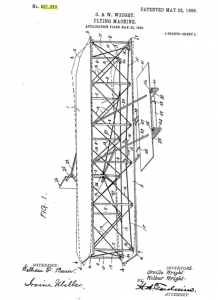
(Oblique view of the airplane – Wright 1906 Patent)
The National Archives stock several of history’s rarest and most prized documents. Security is very tight in the most crucial anthropological storages in the world, but this has not stopped thieves from taking some of its priceless artifacts.
The patent paper that described in detail Orville and Wilbur Wright’s conception for a flying device were taken by an unknown thief, somehow with no one noticing. Not until 2003 did anyone find out it was missing, and since that time, no one has been able to seize the culprit.
Robberies at the Archives have started to become so common that an equipped task force has been assigned to find the missing pieces. The photograph taken by the astronauts during the Moon landing was recovered, as well the audio tapes from the Hindenburg crash. Until someone attempts to auction off the hand drawn sketches from the 1900’s, we might never find out where the patent papers disappeared.
(The mace of the Lord President of the Court of Session)
The Parliamentary Mace was a symbol of the constitutional right of the people of Victoria, and the Office of the Speaker. On October 9 of 1891, it suddenly vanished.
Parliamentary technologist Thomas Jeffery was spotted running out of the building that afternoon, bearing a package that was identical to the description of the artifact.
Police also discovered tools in his home that were compatible to the markings on the display case that was forced open during the robbery. Due to the lack of evidence, though, Thomas was able to evade imprisonment.
Some say that the mace was taken by members of the house, and left in a brothel as a joke. A committee discovered no actual evidence but was convinced that the mace was never in a brothel at any time.
Although the mace had little intrinsic value, the reward for its recovery stands at $50,000. So treasure hunters who want to please the parliament, but at the same time earn some easy cash, may start their search some place close to the Maribyrnong River in the suburban area of Melbourne.
Dutch Schultz’s Stash
(Dutch Schultz)
The New York mobster Arthur “Dutch” Flegenheimer stole his nickname, with virtually everything that was not nailed down, and assembled an empire valued at $20 million a year. Consistently hounded for tax evasion, he accomplished what Capone had never thought to do. He packed away his fortune in a metal box and then buried it in the Catskills.
Intending to retrieve the fortune when things cooled down, and knowing that many of the mobsters who went to prison frequently lost their empires while they were away, Dutch kept the location of his fortune a secret. He was later found innocent of his crimes and set about changing his image. He was gunned down soon after, during a meeting at a local eatery.
Due to the lack of evidence and the expense connected with finding the treasure in the vast wilderness, attention has fallen from this legendary treasure in the past years. They are awaiting discovery in upstate New York.
Tanto Mei-Kunimitsu
(Tanto Mei-Kunimitsu)
Stealing national treasures is not purely an American problem. According to the Agency for Cultural Affairs in Japan, 109 items are marked as important artifacts and national treasures that have gone missing from their collection. The pieces are being kept by private owners, which make it nearly impossible for the agency to track their whereabouts.
The listed items which are unable to be located are ten paintings, 17 sculptures, and 52 swords. The reports say that they were either stolen, the owners have moved them, or no one kept track of the items after the owner passed away.
Within the missing collection was a 13th century tanto sword bearing a signature saying “Kunimitsu.” The owner passed away, and the agency was not given notice when the item turned into a highly valuable inheritance. With countless pieces of its kind, the agency believes the owners were not aware of the policies in place to control their locations. They are arranging visitation to the remaining owners on a regular basis to keep tabs on their whereabouts.
The Lost Dutchman
(Weaver’s Needle is a prominent landmark for locating the lost mine)
The tale of the Lost Dutchman and his mine is thought by many to be nothing less than a fairy tale. Many, though, have risked and even lost their lives in search of the treasure.
The alleged gold mine was founded during the 1840s in the appropriately named Superstition Mountains of central Arizona. A family had worked the mine and transported gold back to Mexico until a group of Apaches murdered them.
One or two survivors were left, and they escaped into Mexico. The area where the attack occurred is still identified as the Massacre Ground. The legend grew, and many people claimed to have maps or knew where the mine’s location was. Tragedy befell each of them before they could lay claim to the gold.
In the 1870’s, a German immigrant known as Jacob Waltz claimed that he had rediscovered the mine with the assistance of a descendant of the family. He was also rumored to have stashed the treasure throughout the Superstitions. Shortly after that, his partner was killed, either by Waltz himself or the Apaches.
With his health deteriorating, the Dutchman is said to have revealed the mine’s location to Julia Thomas, a Phoenix area neighbor who assisted in taking care of him in the year of 1891. She was unable to find the mine herself with the information he had given to her. Although many attempted to locate the treasure, not one person has been capable of verifying its existence or been able to discover the missing gold since.
Many accounts position the mine in the locality of Weavers Needle, a vast and well-known formation outside of Phoenix. Groups often come to the area, but the National Park Service caution that the park is dangerous for those who come unprepared.
Ask me anything
Explore related questions
